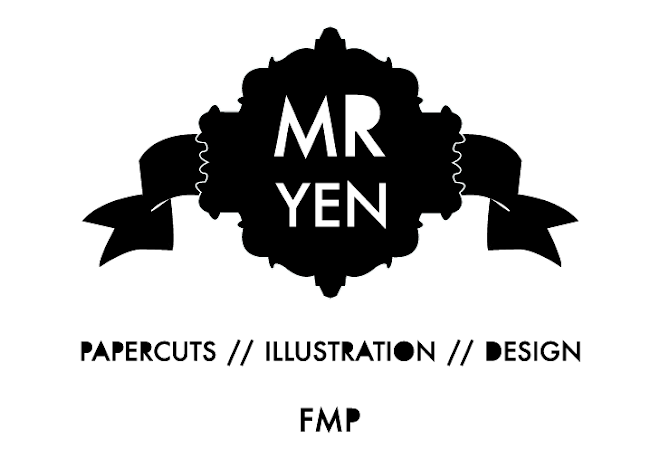This year I wanted to focus my attentions on using paper and paper engineering to create products for a high end market and to promote companies and their products or services. My main underlying interest while creating all my work, has been to explore and experiment the uses and practicalities of paper and how these can be applied in a creative way, to deliver imagery or artwork for a brief.
During my FMP I have contacted designers in my field for advice, to be interviewed for my context book and to just generally make contacts that will be valuable once I leave university. I feel this contact and support has greatly helped develop my design practice skills and personal development. If I could have done anything different in this area I would have probably tried to find contacts that are based more locally in the UK, as the majority of the people I have come into contact for advice etc have been spread world wide. In terms of personal research for my own development and the development of my work and its progression I have started to look at similar companies of people who create designs and work that I would like to create, asking them about their work processes and their goals and aims and have found this research to be invaluable. I think being a student has helped with this as if I was an independent retailer/designer/professional I think they would have been slightly less forthcoming with information.
The majority of my work this year has been all hand cut paper designs, which have then been photographed for use in a specific context, mainly promotion, but I have created my own product ranges too, such as the papercut stationery range, the range of papercut dust jackets and the range of geometric cards (that I created in my spare time for fun) I have enjoyed creating products and designs for a range of contexts, ranging from book jackets, posters, billboards, adshells to greeting cards, stationery ranges, calendars, diaries, magazine adverts and leaflets.
I feel I have created a reasonable amount of work for each brief, some more so than others. I think this is due to the time I spent on each brief and my level of interest for the content of the brief. I feel I spent too long on certain projects (such as the Leeds Library brief) constantly tweaking and adapting small elements of the design, which I should have just tackled all at once instead of letting it drag out over weeks. I feel I could improve my work rate by creating more detailed timetables (as these became less used towards the end of the year - when they should have been used more) planning printing and finishing of briefs into the deadline available, with enough room for changes due to unexpected hiccups and by making decisions quicker & sticking to them. I think the deadlines I gave myself were respectable, but I should have given some briefs more official development time, such as the papercut dust jackets/book cover brief, instead of constantly going back to develop and change little bits of the designs. I felt the work created in the time scales given varies from brief to brief as I think the amount of work produced for certain briefs is appropriate, but for others I feel I could have developed the contexts for the final products if I had organised my time better. Also as I developed my work, I was constantly evaluating through experimentation and photography, seeing which designs and products worked best for their contexts and adjusting the designs accordingly.
With my style of work and processes I use I have focused the majority of my time on briefs that create work for a more high end, collectable niche market. I think this market best suits my work as papercuts are quite delicate and a definite niche product that only a select few would purchase. I have tried (with my own papercut stationery brief) to create products using the delicatness of papercuts mixed with the practicality of an object, such as a notebook and I have done this as I feel people ultimately view papercut work as art and not design, thinking they are not very practical, which I would like to change.
I will be developing my papercut stationery range in my own time in the future and will still be experimenting with papercut designs for more practical commercial reasons for use in my freelance design career alongside making practical papercut creations for sale.
Presentation Boards





















I have posted my Presentation boards in separate blog posts under the labels for each brief, but I thought it would be good to see them one after another in one post.
Labels:
FMP,
Presentation Boards
Design Context book - Final Book
This is my final context book, perfect bound by hand, with a papercut front & back cover and an accompanying black paper band.


















Labels:
FMP
Stationery Range Brief - Promotional Poster Experiments
I would like to use a promotional poster of my papercut stationery which I can use for the exhibition as I feel this brief best represents what I want to focus on when I leave university - ranges of papercut products. Below you can see some experimentation I have started. I feel it is important to incorporate my logo and a clear product shot of the products and their highlights. I have also experimented with a simple digital geometric design over the top of the photograph and a small amount of text (in a clear and plain font) explaining what the products are.




Labels:
FMP,
Stationery Range Brief
Ikea Catalogue Brief - Final Papercut Photographs
Below you can see the final papercuts I created for the IKEA brief. The final images are the bottom two designs and the images directly below are the detail shots of the papercuts.
































Labels:
FMP,
Ikea Catalogue Brief
Subscribe to:
Posts (Atom)



